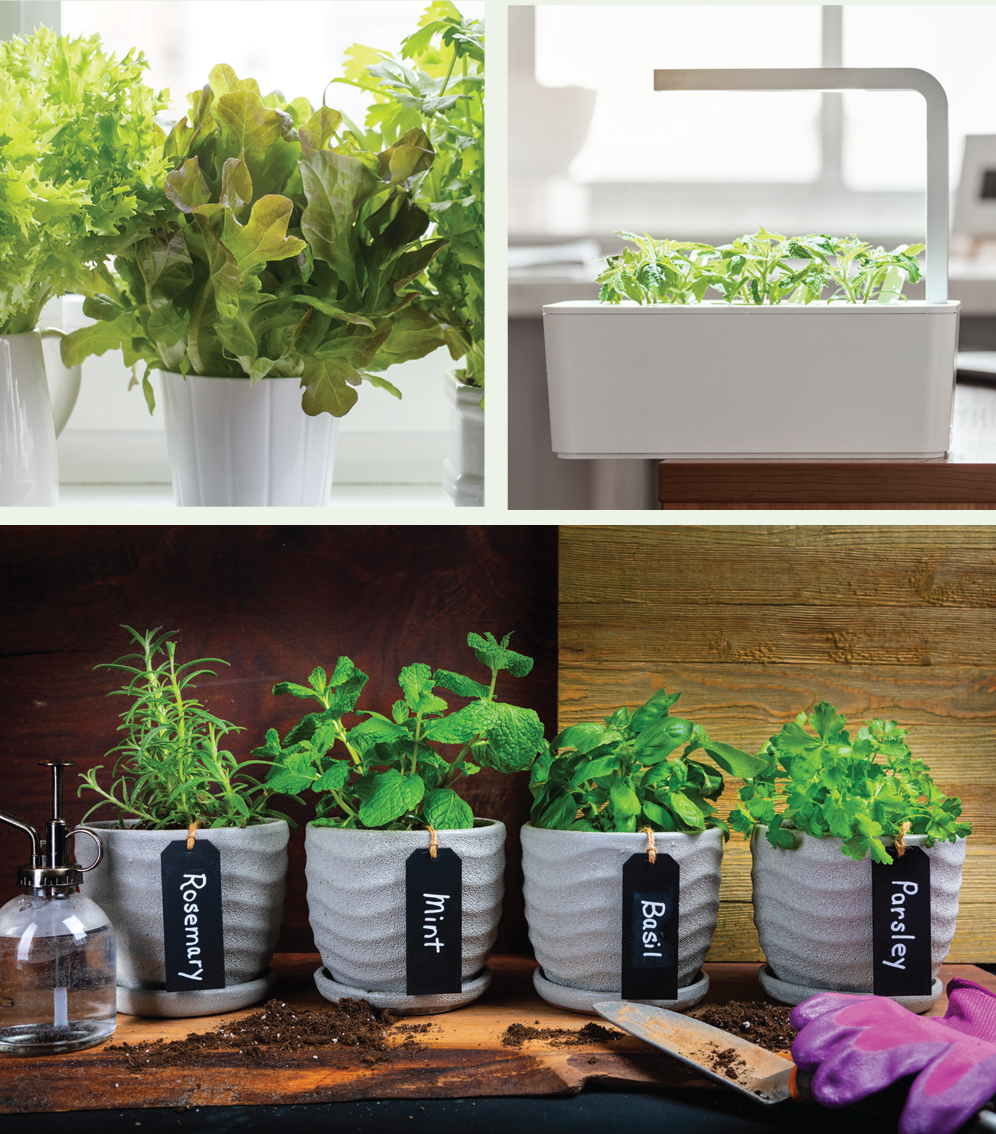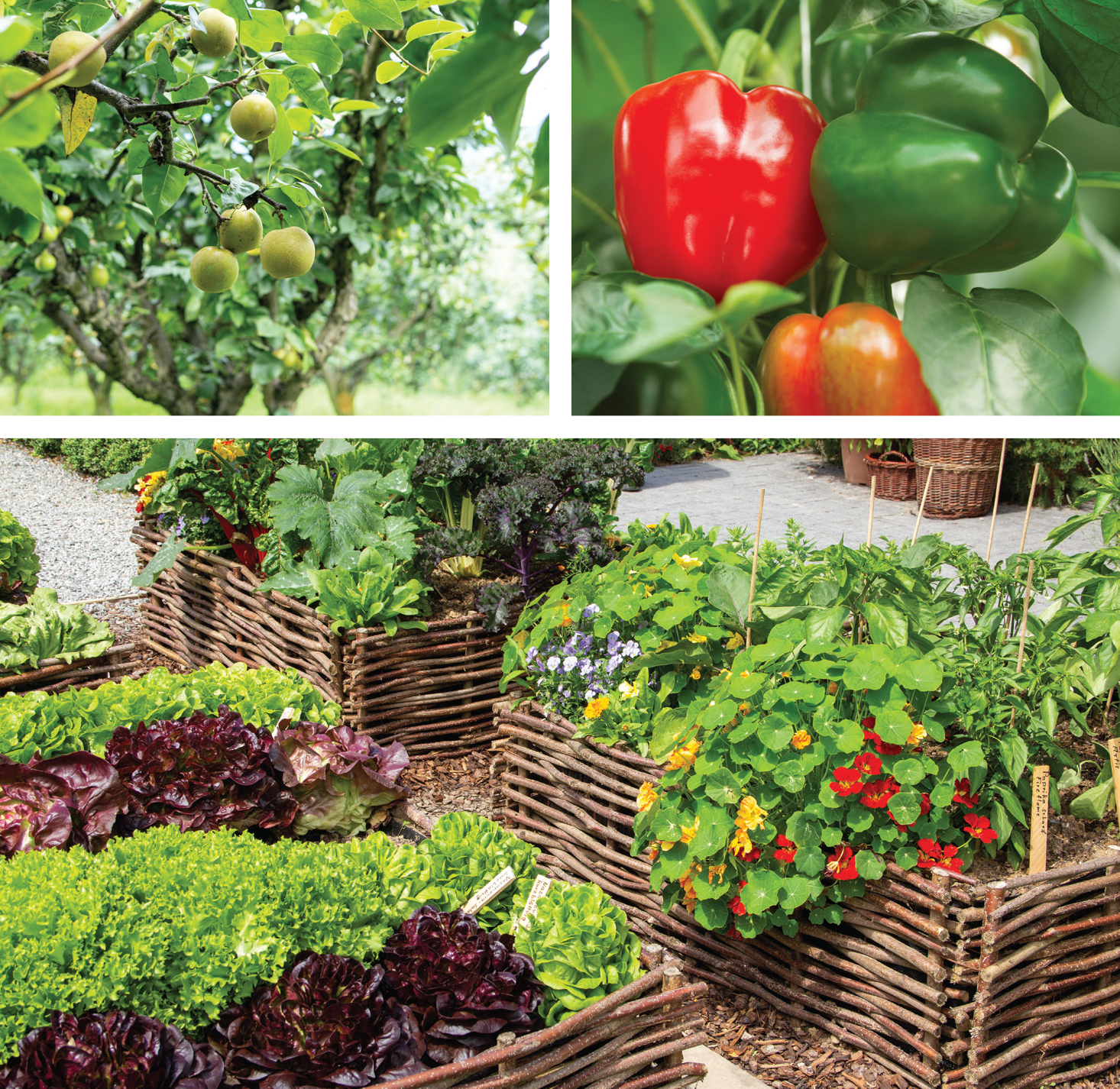CULTIVATING JOY

Intentional Plantings Can Both Beautify & Nourish
We all know buying local is good across many dimensions. When we purchase from community business owners, we support our region’s economy, minimize our carbon footprint and – if we’re shopping for meals – enjoy fresh food that hasn’t traveled for days to reach us.
What if that food could come from our own backyard?
By making use of abundant free resources online and expert advice available in local community extension offices, it’s easy to add edible plantings to a yard or existing flower beds. If you want to go further, consider replacing hedges with fruit-bearing bushes (highbush blueberry is a good one) or fruit trees that, in several years, will let you pick your own juicy pear.
Where to start
As with so many home projects, start with research. Know your climate zone (hint: most of our area is in Zone 7a) for when seedlings can safely go in the ground and to determine which varietals are hardy enough for the location. Also consider your own yard’s microclimate, which includes the slope of the planting area, sun exposure and orientation. You’ll also want to test the soil to see what nutrients should be added; the Virginia Cooperative Extension Service will have kits. (Find yours at ext.vt.edu/offices.html.) If you don’t have much yard space, or just want to maintain some flexibility and control, consider using moveable planters or pots. These reduce intrusions from weeds and offer back relief, since you won’t have to bend over as much for tending and harvesting. Remember, though, that plants in containers need regular watering, as they will dry out more quickly than a large patch of soil.
What to plant
Next, think about what you want to eat. Start small, and focus on fruits and vegetables you enjoy. If you like salsa, consider tomatoes, peppers and cilantro. If you want to attract pollinators and add a spark of interest to your meals, plant edible flowers. Marigolds, nasturtiums, pansies, calendula and cornflowers are pretty and can be safely consumed.
 Fruit and nut trees can offer unexpected benefits, by providing high-quality and often expensive treats just for the picking. Bear in mind that trees and fruit-bearing bushes often take several years to mature; you’ll have to wait a bit for their bounty. For ground cover, consider lingonberry, which will take a few years to produce, but generates fruit twice a year, in spring and fall.
Fruit and nut trees can offer unexpected benefits, by providing high-quality and often expensive treats just for the picking. Bear in mind that trees and fruit-bearing bushes often take several years to mature; you’ll have to wait a bit for their bounty. For ground cover, consider lingonberry, which will take a few years to produce, but generates fruit twice a year, in spring and fall.
When to plant
Another consideration is timing. Ideally, your growing garden will have food ripening throughout the season. Leafy greens – such as lettuce, kale and chard – are the first to arrive. Tomatoes come later, followed by zucchini and squash. Pay attention to how well each plant grows in its location and how much it produces; it might be happier in a different spot.
Draft a plan, and don’t be afraid to adjust from year to year. Fruit and vegetable plants add variety and color to your surroundings and create practical benefits: fresh produce, a smaller carbon footprint and financial savings. Home gardening also can be a powerful educational tool for children, as they learn the science behind some of the food they eat and the importance of caring for another living thing. You never know what you – and they – might discover!

Try an at-home herb garden to start
Sometimes, a full-scale garden just isn’t the best idea. Gardens require space, adequate light, water and attention. It’s easy to have ambitious plans early in the season, before summer heat and schedule changes (hello, vacation!) make it harder to tend those plantings. A simpler approach can make more sense – like an indoor herb garden that is readily accessible and will quickly yield results.
Start by evaluating your home cooking. Which herbs do you most often turn to, either for flavoring within a recipe or as garnish? Identify three or four, so you don’t bite off more than you can chew (literally!), and then research those herbs to see if they can live together in one pot or require separate growing containers. (Mint spreads wildly.)
Next, decide where the plants will live. A deep windowsill with good light? Just outside the kitchen, on a patio or porch? Or is counter or shelf space the only option? Thanks to technology, if you have a space that’s no larger than 5 x 12 inches, with a height range of 8 to 19 inches, you can find a device that does virtually all the work.
So-called “smart gardens” often come with their own pre-seeded plant pods, reservoirs for steady watering and lights that can be adjusted for germination and, later, to accommodate taller plants. With prices ranging from $60 to hundreds of dollars, you can choose the size and complexity that’s right for you. Remember: Every time you snip the exact amount of cilantro you need, you don’t have to worry about the bundle of store-bought cilantro decaying in your crisper. ✦
backyard, buying local, community business, edible flowers, edible plantings, Fruit trees, fruit-bearing bushes, herb garden, local community, microclimate, smart gardens







